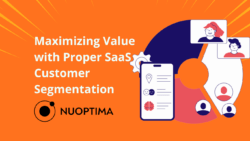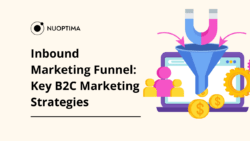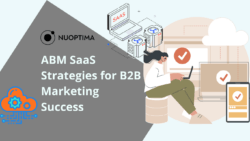Key Points
- There are different elements of an acquisition offer, and it is important to understand each element. Five main components of an offer are money, seller holdback, seller rollover, earnout, and seller financing.
- There are various exit deal structures that you can opt for, including a combination of down payment and seller financing, equity swap, and cash upfront.
- Customising a SaaS exit deal based on the needs of yourself and the buyer is highly recommended. You must also have an exit strategy before you list your business for an acquisition deal.
- NUOPTIMA is an expert growth agency with professional experience in scaling and selling brands. Book a free 15-minute consultation call if you would like to learn how we can help your SaaS brand today.
When you decide that you want to close an acquisition, it is important that you structure a deal that not only works for you but that works for the buyer as well. It is critical that a deal is structured that reflects your interests and satisfies both parties, as this increases the chances of the acquisition actually being closed. This first part of this article details the various elements of an acquisition offer.

Different Elements of an Acquisition Offer
Before we delve into some common acquisition deal structures, we first consider the various elements of an offer and how they work. This is critical because if you receive an offer but do not fully understand the components of the offer, you cannot be sure that you are getting a good deal for your SaaS business. Whether a specific component is good or bad for your business depends entirely on your individual goals. Let’s now consider five of the most common elements of an acquisition offer.
Money
First on our list is money because it is the most straightforward and well-known acquisition offer component. When you accept an offer in cash, it is sent straight to your bank account, and the deal is done. But, it is crucial that you thoroughly assess your buyer, as there is also a level of risk with an acquisition offer. With money, the risk factor decreases dramatically, but there are still certain issues to be cautious of, such as money laundering. As soon as the deal is complete, the buyer accepts all the risks of the business onto their shoulders, so be aware they may ask for a lower price than you initially offered. If this is not viable, you may need to consider other components in addition to money to sweeten the deal for you.
Earnout
An earnout is a contingent payment, where you negotiate a payment plan and the parameters you must meet in order to receive these instalments. This means that you need to be willing to delay some of the price and recognise that there is a chance you will never get it (depending on whether you reach the agreed benchmarks). Earnouts are usually related to business performance, such as through earnings or sales, over a three- to five-year timeframe, so you must consider your company’s prospects over that time period. The various types of earnout terms are countless. While it sounds like an earnout puts the ball firmly in the buyer’s court, this is not entirely the case. You still have the right to negotiate the length of the earnout period, the instalments, and the parameters that need to be reached. But remember, this component means that you will stay attached to the company even if you no longer have any authority regarding the running of it. It can be a considerable risk, so it is not a decision that should be taken lightly.
Seller Holdback
A holdback is a powerful component for the buyer as it ensures they will receive what they have bargained for. Seller holdback is when a buyer retains part of the purchase price after closing and pays the remaining funds after specific conditions have been met. For instance, this could be after the results of a litigation case or achieving a particular working capital parameter. The amount is generally held in a third-party escrow account, most often the seller’s. This is done in order to protect both sides involved in the deal. Seller holdbacks are reasonably common, as many sellers need to provide certainty about various matters that may not be fully known at the time of closing.
While this may sound similar to earnouts, seller holdbacks do not entail meeting certain performance goals. Instead, buyers might suggest a holdback if they have reservations, such as if they are uncomfortable about a specific facet of the company.
Seller Rollover
This element possesses quite a high risk so ensure you consider it wisely if this is offered to you. A seller rollover is a situation where you agree to accept equity in the new entity. The issue with this option is its complete unpredictability. You might find that the company grows double or even quadruple its size, and you enjoy a sizable sum, or it might go broke. Because it can be so hard to determine, and you often have to wait years for the guaranteed exit, it is critically important that you have full confidence in the buyer’s capabilities and promises.
While seller rollovers are a risky venture, the rewards can also be very appealing and could make you much richer. When debating whether a seller rollover is a good option, conduct thorough research and ask yourself questions, such as:
- What are the terms and conditions of those shares?
- What is the cost of each share?
- How did the buyer determine that value?
- Are your shares identical to everyone else?
Seller Financing
Seller financing is when you let a buyer spread the payment for your company over an extended period of time (generally five to seven years max) once they have made a down payment rather than selling the business for a lump sum. The down payment must be a minimum of 25%-35% of the purchase price, and typically at the end, there will be a larger instalment payment, known as a balloon payment, that settles the debt. As with any component, terms are negotiable. So, if it pleases you, you could opt to offer a grace period for a while and ask for a balloon payment at the end of the instalments. The primary risk with this component is that you have to have confidence that the company will gain enough income to meet those instalments, so ensure you undertake sufficient due diligence prior to agreeing to anything.
In the second section of this article, we consider six common exit deal structures made by SaaS companies so you can determine what option is right for you. Remember that these are simply frameworks to refer to and that it is highly recommended that a deal is customised to suit the needs of you and the buyer. Also, make sure you have an exit strategy prior to listing your business for an exit deal.

Common Exit Deal Structures for SaaS Businesses
Down Payment and Seller Financing Exit Deal Structure
This first exit deal structure is when the buyer is satisfied with your valuation of the business and is keen to sign the purchase agreement but cannot provide the entire financial sum. In this case, you can accept a down payment and seller financing. As aforementioned, seller financing is when you allow a buyer to spread out the payment for your business over an extended period once they have made a down payment.
Initially, this may not feel like a deal that benefits you as much as the buyer. However, this structure can encourage a higher price for your startup. Indeed, because this deal structure has an increased risk of the buyer defaulting — especially if a buyer wants to pay for more than half of the company in instalments or extend the payment period — a higher purchase price is justified. A second benefit is that it can attract more interest in your company, particularly if your business is within a competitive sector or if your company has been underperforming. Seller financing helps reassure the buyer that you will be available for some time to assist with asset transition.
Down Payment and Seller Financing with Earnout Exit Deal Structure
This is a viable option if a buyer has the money for your company but does not want to pay for it all straightaway. This does not necessarily reflect poorly on your SaaS business, as it could be down to a multitude of factors, including trepidation about the market outlook. Therefore, it can be a good idea to structure a deal that involves a down payment and seller financing with an earnout.
As mentioned in our first section, an earnout is where you negotiate a payment schedule and the specifications you must fulfil to receive these instalments. The ratio between down payment and seller financing is up to you. Just remember that an earnout will keep you connected to the business even if you have absolutely no say over the running of it. It is essential, therefore, that a negotiation with feasible targets and a short earnout period (up to a year) is made. While this structure will not appeal to everyone, it can attract more potential buyers as you are reducing their risk while displaying your confidence in the company’s success.
Equity Swap Exit Deal Structure
Sometimes when negotiating an exit deal, a buyer may not offer money but equity in a different company they own (or perhaps equity in the new amalgamated company if it is a merger deal). This deal structure is more prevalent with large or public businesses.
The main risk to bear in mind is that chances are, you will have zero knowledge of the other business, so it is vital that you do your research before agreeing to anything. Make sure that it is a genuinely good investment for you personally. Generally speaking, a combined deal with cash is best as you will no doubt require capital for your next venture. A key advantage to this choice is that you can avoid transaction costs. However, take note that equity swaps are largely unregulated and therefore carry some level of risk.
Full Cash Payment Upfront Exit Deal Structure
A buyer paying for your SaaS company with all the money upfront is generally the most straightforward option. Unlike with some options, such as seller financing and earnouts, this exit deal is completed in one payment, allowing you and the buyer to go your separate ways and follow your next venture unhindered. This is a particularly attractive option if you want to remove yourself from the market or if you want to put your attention on another business venture. In a nutshell, this is an option where you can “take the money and run”.
Of course, this choice has advantages for the buyer as well, as they can immediately make changes without being held back by contractual obligations, seemingly endless instalments, or shareholders that have to approve these changes.
Solely Seller Financing Exit Deal Structure
This exit deal framework is 100% seller financing (although an earnout can also be negotiated into this structure). To put it bluntly, this is generally not an ideal situation to be in. Sole seller financing should only be considered if you find your business has not gained much traction on the market for whatever reason. This could be for a plethora of reasons, such as being in a competitive or niche industry where you’ve struggled to break through. In this circumstance, offering seller financing could convince buyers to obtain your SaaS brand. Therefore, ensure you advertise seller financing when listing your company for sale.
As mentioned earlier, seller financing can be a great way to draw buyers and widen interest in your company, so it absolutely should be considered if you are struggling to attract interest without it. But, remember that certain risks are involved, and you will be attached to the company for some time after the deal is complete. Do not feel as though you have to settle for this option if you are not gaining traction. Oftentimes it can be best to wait until your business is in a better position or even let it go to focus on a different company.
Down Payment and Equity Exit Deal Structure
Depending on your situation, this could be a fantastic deal structure to pursue. If the potential buyer has a strong track record of scaling acquired businesses at an impressive rate, equity can be an excellent way to get you benefiting from that success. This is especially satisfying because it was you who built the company to where it currently is, and you get to enjoy a portion of the profits.
It can also be a good idea to keep some business equity and offer a lower price of purchase. This is a popular choice when buyers want to keep you as a part of the company in some form or another, such as for consultation purposes or insights. Moreover, it could be a good option for you too if you are looking to assist a company you are responsible for creating. The key to this structure is ensuring that there is a good connection between yourself and the buyer. You want to be confident that you are on the same page in terms of the business and that conflicts are unlikely to occur. For this reason, you must conduct due diligence on the buyer before agreeing to a deal so you can determine whether it is a viable and conducive choice. This option might also include seller financing depending on the terms agreed.

For a deep dive into crowdfunding and its impact on SaaS, listen to the Nuoptima SaaS Podcast featuring Hannah Forbes from Lima.
The Takeaway
Deciding the best elements of an acquisition offer for your SaaS business is no easy task. It is essential that you have a deep understanding of each component so that you can determine whether an offer is beneficial to you or not. Furthermore, it is critical that you understand the different types of exit deal structures to get the best out of an acquisition deal. Generally speaking, it is highly recommended that exit deals are customised to suit the needs of both the buyer and yourself. Furthermore, ensure that you plan your exit before you decide to list the company for an exit deal. As SaaS exit deals can be a complicated and confusing endeavour, it is highly recommended that you enlist the help of reputable experts. NUOPTIMA is a professional growth agency with specialised knowledge in scaling and selling brands. We have also worked with numerous SaaS brands in the past. If you would like assistance with your SaaS business, book a consultation call today to learn how we can help.



